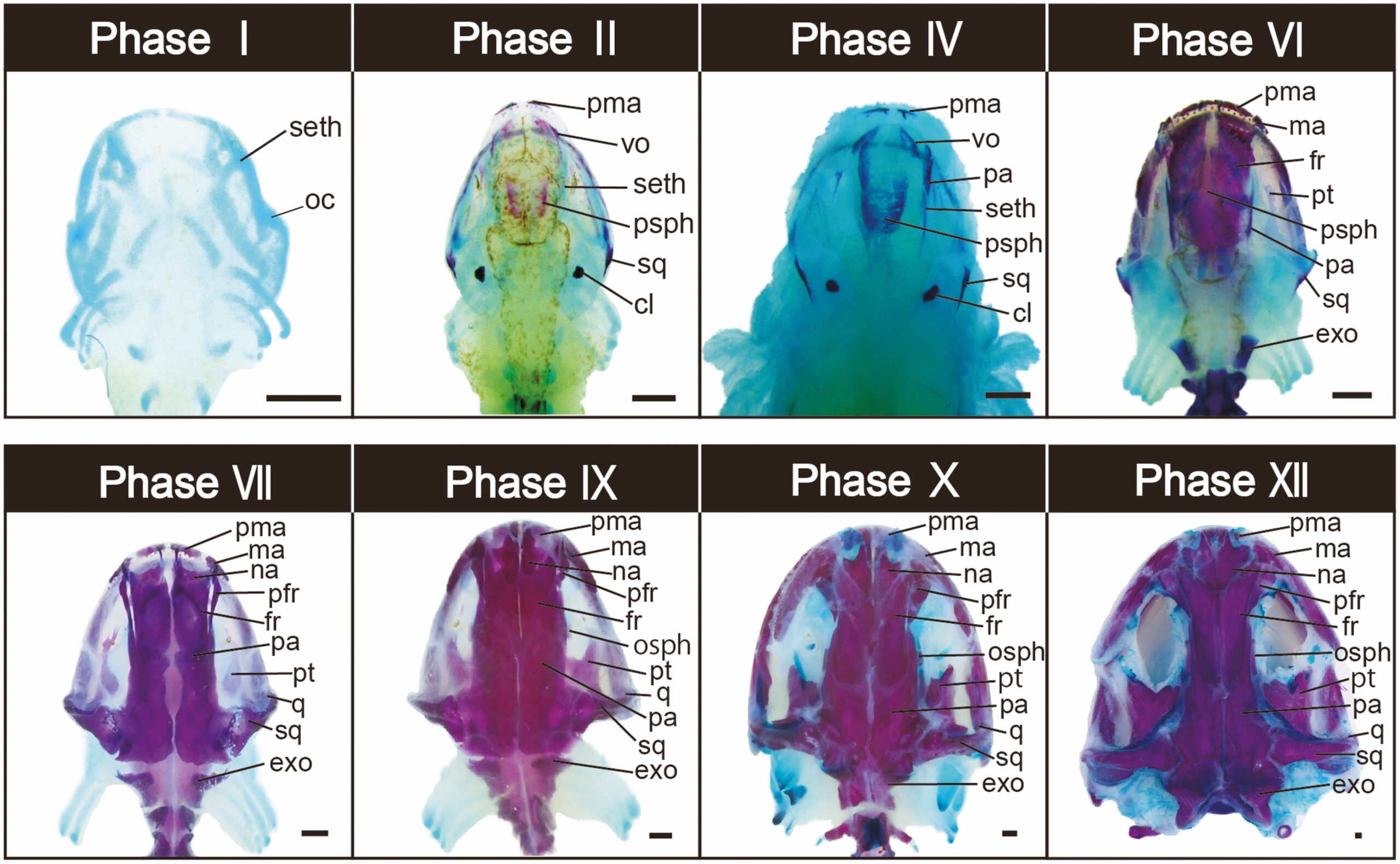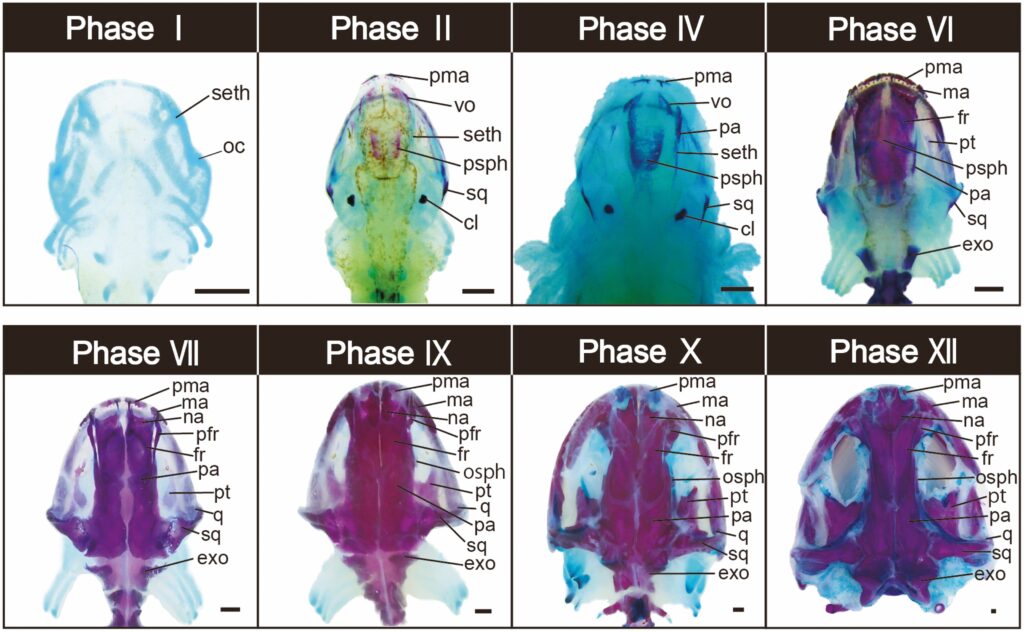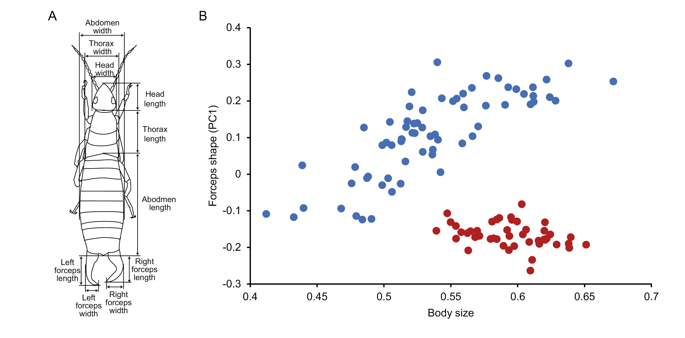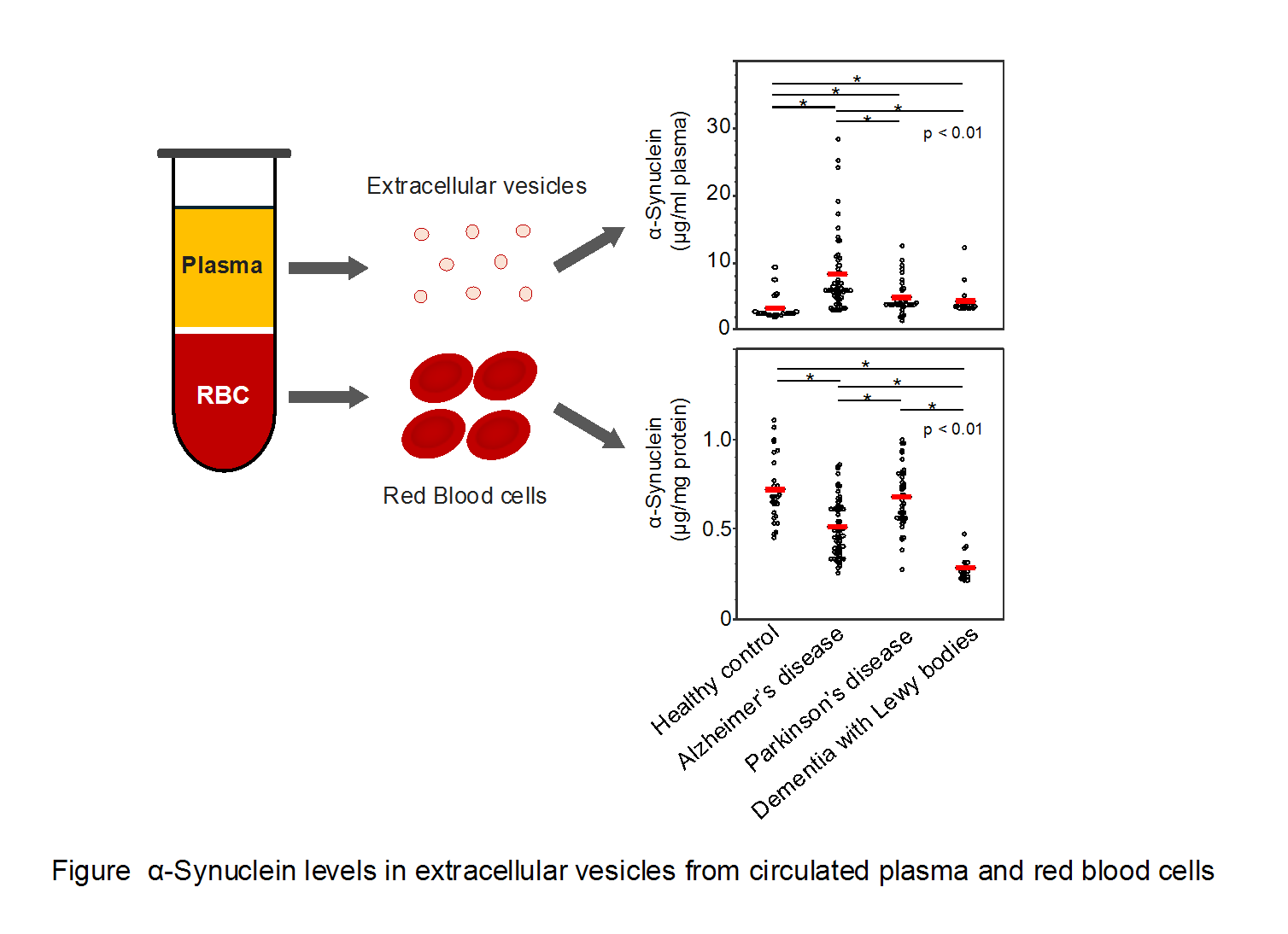World's first report of a unique skull formation process in the Japanese giant salamander
As a result of this research, some uniquenesses in the skull formation of the Japanese giant salamander were uncovered, and it was suggested that the skull formation process of salamanders may be closely related to the life history and feeding style of each species. These results were published in the Zoological Journal of the Linnean Society, a British zoological journal, on July 7, 2021.
Key Points
- Using a large number of specimens from the zoo collection, the formation process of the head skeleton (skull) of the Japanese giant salamander was described for the first time.
- A comparison of skull formation patterns among four species of salamanders (Andrias japonicus, Hynobius nebulosus, Pleurodelss walti, and Ambystoma mexicanum) revealed that the skull of the giant salamander begins to ossify at earlier stage of growth than that of the other three species, and that the jaw joint moves outward during the growth process, resulting in a relatively larger opening than that in other salamander species.
- It was suggested that the process of skull formation in salamanders may be strongly related to foraging methods associated with the life history of the species, either aquatic or terrestrial.
(スマホで崩れるようなら使用する。)

Key Pointsテキスト

Cranial skeletogenesis in the Japanese giant salamander, Andrias japonicus. Cranial bones and cartilages are shown for eight of 12 developmental phases. Scale bars: 1 mm. Abbreviations: cl, columella; exo, exoccipital; fr, frontal; ma, maxilla; na, nasal; oc, otic capsule; osph, orbitosphenoid; pa, parietal; pfr, prefrontal; pma, premaxilla; psph, parasphenoid; pt, pterygoid; q, quadrate; seth, sphenothmoid; sq, squamosal; vo, vomer.

Cranial skeletogenesis in the Japanese giant salamander, Andrias japonicus. Cranial bones and cartilages are shown for eight of 12 developmental phases. Scale bars: 1 mm. Abbreviations: cl, columella; exo, exoccipital; fr, frontal; ma, maxilla; na, nasal; oc, otic capsule; osph, orbitosphenoid; pa, parietal; pfr, prefrontal; pma, premaxilla; psph, parasphenoid; pt, pterygoid; q, quadrate; seth, sphenothmoid; sq, squamosal; vo, vomer.
Summary
There are approximately 750 extant species of Caudata (salamanders), an order of amphibians. Their living environments range from underwater to terrestrial to arboreal. In this study, Associate Professor Masayoshi Tokita and his colleagues at the Faculty of Science of Toho University prepared transparent skeletal specimens of four species from four families of salamanders, including the Japanese giant salamander, and qualitatively described the formation process of the skull. Furthermore, by using the geometric morphometric method, which has been actively used in recent years in comparative morphology research, the group quantitatively compared the skull formation process of the four species.
As a result of the study, significant differences among the species were observed in the onset of skull ossification, the direction of ossification, and the patterns of morphological changes in the hyoid and gill bones. In the Japanese giant salamander, ossification of each bony element of the jaw occurs very early in the growth process, and as the jaw grows, the maxilla elongates posteriorly and the squamosal slope backward.
These features of skull formation may be related to the unique foraging method known only to the family Cryptobranchidae. They forage by suction feeding, using the water current generated by both the submergence of the hyoid bone and by the negative pressure when the jaw is opened up and down, in addition to asymmetrical occlusion, in which the left and right sides of the jaw move independently to catch prey.
This study suggests that the process of skull formation in salamanders may be closely related to the life history and feeding style of each species.
READ MORE RESEARCH NEWS - SCIENCE
Undergraduate Programs
– Medicine
– Pharmaceutical Sciences
– Science
– Nursing
– Health Science
Graduate Programs
–Medicine
–Pharmaceutical Sciences
–Science
–Nursing
RESEARCH
– News
– Guidelines & Policies
– Support Offices
– Facilities
– Security Export Control
Non-Degree Programs
– Clinical Elective Program
– International Physician Observership Program




